Философские идеи Людвига Витгенштейна - [62]
3. After a revaluation of the role of "strict" logical (it took place in the end og the 20-s) internal qualities of "formal concepts" were transformed in Wittgenstein's texts into "conceptually necessary" rules of "depth grammar". This was realized in his theory of "criteria". In it a statement of the form "A is a criterion of B" means that by a certain linguistic convention it is true, that if A, then B. It was declared that (internal) criterial relations were lodically more powerful than inductive evidence ("symptoms"), but at the same time were not analytical. This feature of them was exploited by Wittgenstein in order to explain the fact that in the presence of a certain criterion an event (or an object) which is connected with it may not be present. Conceptual conventions were unevenly treated as absolutely basic for all types of "linguistic practice" which serves later Wittgenstein as the model of various kinds of human activity (so-called "forms of life" - Lebensformen). The position of peculiar "conceptual determinism" (first put forward in general form by British Absolute idealists) is expressed in his texts and in the works of many post-war analytical philosophers by the "grammar" of linguistic conventions which is interpreted as the universal foundation of philosophical and scientific inquiry and common-sense approach. This signals unevenly substitution of "conceptual necessity" for objective and necessary connections and relations. Largely because of that modern analytical philosophy arrives noawdays at deep theoretical inconsistencies.
S.A. Sokuler. The conception of science in the "Tractatus logico-philosophicus"
-
It is often said that in the "Tractatus" science is opposed to philosophy as senseful propositions to senseless ones. Indeed, Wittgenstein characteries science as the totality of true, senseful propositions, as saying nothing except what can be said (4. 11; 6. 53). Also he says that "most propositions and questions, that have been written about philosophical matters, are not false, but nonsensical" (4. 003). If it isn't clear from these remarks that for Wittgenstein science is an ideal and philosophy is an aberration that hardly has any right to the existence? I think that it isn't clear at all. Trying to show this we should clarify the role of senseful - senseless distinction. This will shed some light on Wittgenstein's understanding both of science and of philosophy.
Let us have a closer look at the thesis (4. 11) of the "Tractatus": "The totality of true propositions is the total natural science (or the totality of the natural sciences)". This thesis looks at first as an overvaluation of the science. It looks as stating that all propositions of natural sciences are true. How outmoded it looks today, after Popper's critics of the verification and justification, after Kuhn's theory of the scientific revolutions, after Feyerabendian critics of science! But let us wait for a moment.
I
What is this "total natural science"? Is it the sum of all received scientific theories? The answer is "no", I think. Why? Because the total natural science is constituted by the totality of true propositions. According to the conception of the "Tractatus", a proposition is true if it is a picture of some fact. A proposition is true, if "To the configuration of the simple signs in propositional sign corresponds the configuration of the objects in the state of affaires" (3. 21).
Can the theoretical propositions of science be pictures of states of affairs? I think they cannot, for to be pictures they must either be configuration of the simple signs, or be reducible to such configuration by analysis.
Let us begin with the first possibility.
In that case theoretical terms of scientific theories become simple signs representing objects in propositions. For example, sign "gene" represents gene, sign "electron" represents electron and so on. Hence, there must be the theoretical objects such as electrons and genes in the world of the "Tractatus". But their existence is incompatible with what Wittgenstein says. For example, if there were such objects as electrons, some theoretical statements about them (stating what electron is) should become apriori. On the contrary, for Wittgenstein "there is no picture which is a priori true" (2. 225). If there were theoretical objects, some elementary statements about them could depend upon one another (for example, being connected by the causal relation). On the contrary, for Wittgenstein elementary propositions are independent (5. 134 - 5. 136). Hence the theoretical propositions of sciences cannot be configurations of simple signs representing the corresponding theoretical objects.
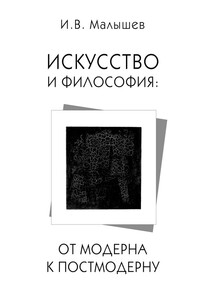
Сборник статей доктора философских наук, профессора Российской академии музыки им. Гнесиных посвящен различным аспектам одной темы: взаимосвязанному движению искусства и философии от модерна к постмодерну.Издание адресуется как специалистам в области эстетики, философии и культурологи, так и широкому кругу читателей.
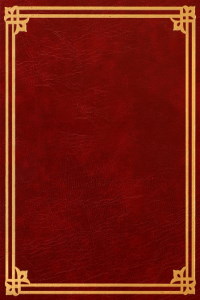
Санкт-Петербург - город апостола, город царя, столица империи, колыбель революции... Неколебимо возвысившийся каменный город, но его камни лежат на зыбкой, болотной земле, под которой бездна. Множество теней блуждает по отражённому в вечности Парадизу; без счёта ушедших душ ищут на его камнях свои следы; голоса избранных до сих пор пробиваются и звучат сквозь время. Город, скроенный из фантастических имён и эпох, античных вилл и рассыпающихся трущоб, классической роскоши и постапокалиптических видений.
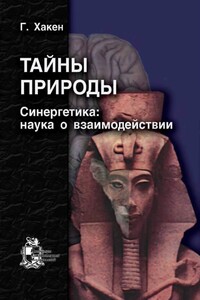
Книга представляет собой перевод на русский язык знаменитой «Тайны природы» Германа Хакена. Ее первейшая цель — донести до читателя идеи синергетики, позволяющие познать удивительные, необычайно разнообразные, организованные структуры, созданные самой природой. Для самого широкого круга читателей.
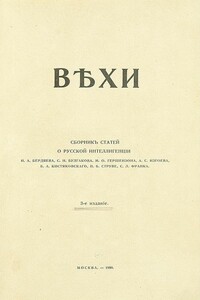
ВЕХИ. Сборник статей русских философов начала XX века о русской интеллигенции и её роли в истории России. Издан в марте 1909 г. в Москве. Получив широкий общественный резонанс, к апрелю 1910 г. выдержал четыре переиздания общим тиражом 16000 экземпляров. Михаил Осипович Гершензон. ПРЕДИСЛОВИЕ Николай Александрович Бердяев. ФИЛОСОФСКАЯ ИСТИНА И ИНТЕЛЛИГЕНТСКАЯ ПРАВДА Сергей Николаевич Булгаков. ГЕРОИЗМ И ПОДВИЖНИЧЕСТВО Михаил Осипович Гершензон. ТВОРЧЕСКОЕ САМОСОЗНАНИЕ Богдан Александрович Кистяковский.
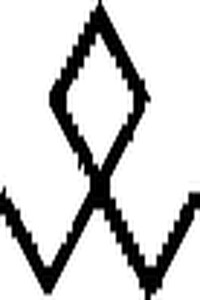
Первое издание на русском языке в своей области. Сегодня термин «вождь» почти повсеместно употребляется в негативном контексте из-за драматических событий европейской истории. Однако даже многие профессиональные философы, психологи и историки не знают, что в Германии на рубеже XIX и XX веков возникла и сформировалась целая самостоятельная академическая дисциплина — «вож-деведенне», явившаяся результатом сложного эволюционного синтеза таких наук, как педагогика, социология, психология, антропология, этнология, психоанализ, военная психология, физиология, неврология. По каким именно физическим кондициям следует распознавать вождя? Как правильно выстроить иерархию психологического общения с начальниками и подчиненными? Как достичь максимальной консолидации национального духа? Как поднять уровень эффективности управления сложной административно¬политической системой? Как из трусливого и недисциплинированного сборища новобранцев создать совершенную, боеспособную армию нового типа? На все эти вопросы и множество иных, близких по смыслу, дает ясные и предельно четкие ответы такая наука, как вождеведение, существование которой тщательно скрывалось поколениями кабинетных профессоров марксизма- ленинизма. В сборник «Философия вождизма» включены лучшие хрестоматийные тексты, максимально отражающие суть проблемы, а само издание снабжено большим теоретическим предисловием В.Б.
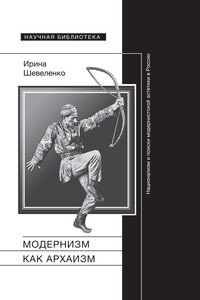
Книга посвящена интерпретации взаимодействия эстетических поисков русского модернизма и нациестроительных идей и интересов, складывающихся в образованном сообществе в поздний имперский период. Она охватывает время от формирования группы «Мир искусства» (1898) до периода Первой мировой войны и включает в свой анализ сферы изобразительного искусства, литературы, музыки и театра. Основным объектом интерпретации в книге является метадискурс русского модернизма – критика, эссеистика и программные декларации, в которых происходило формирование представления о «национальном» в сфере эстетической.